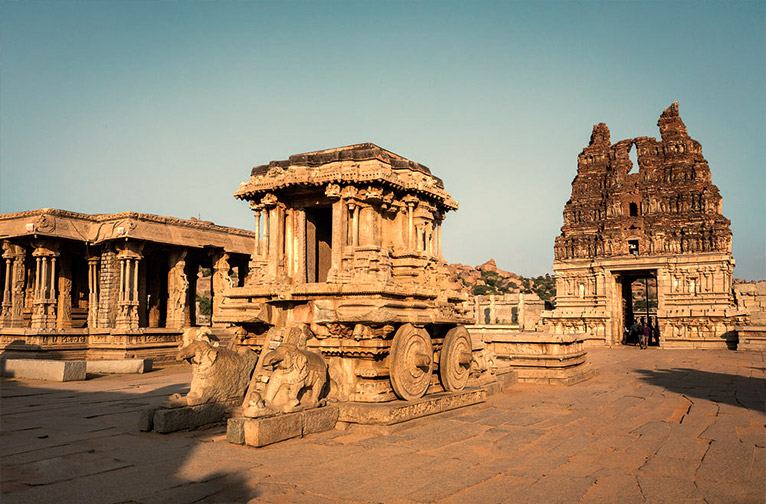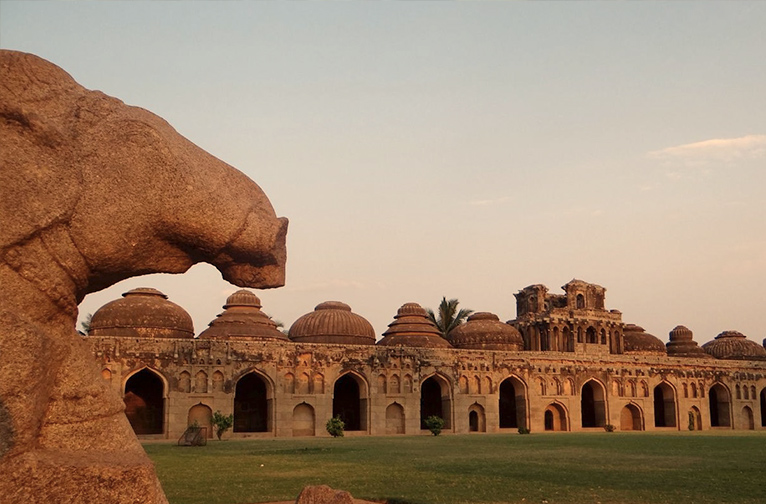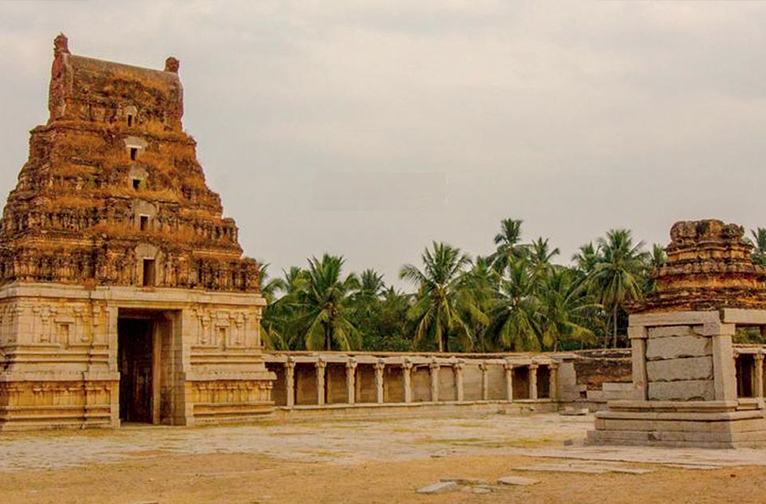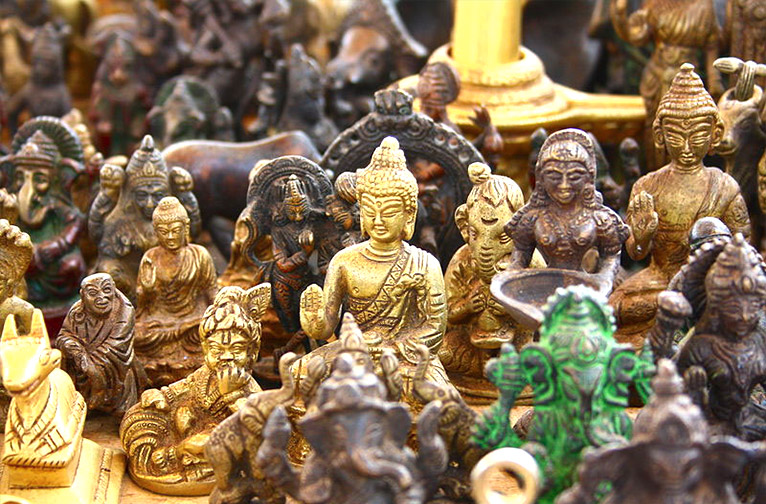Hampi- exotic capital of the last rulers of Vijayanagara, is locked into the annals of history of India as one of its most powerful kingdoms, dating between the 14th-16th Cent CE. Its power and glory is mirrored in its 214 years of uninterrupted rule, far outspanning the years of British supremacy in India. The mystique of this Hindu Kingdom is also reflected in the regal pursuits in the arts and religious fervour of four periods of dynastic rule under the Sangam, Saluva, Tuluva and Aravidu kings from 1336 to 1565. Vijayanagara’s fame and fortunes reached epic proportions under Krishna Deva Raya of the Tuluva Dynasty, who ruled between 1509 and 1530.
It was the persistent attacks of the Deccan Sultans over six months in 1565 which brought this glorious empire down on its knees. Massive destruction of Hampi’s physical fabric and looting became the order of the day in the Battle of Talikota in 1565. Sadly, this phoenix could not rise from the ashes.
The silent boulders and rocks which bore witness to this epic destruction may be still mute, but Colin Mackenzie’s discovery of this abandoned city in 1800 CE gave it back its voice, but this time to the theatre of world tourism. Now a UNESCO World Heritage Site, acclaimed for its embodiment of vanished civilizational contributions to the world as the Vijayanagara Empire, which reached its apogee under the reign of Krishna Deva Raya (1509-1530), Hampi still has many a narrative to reveal to the listening world.
It is also acclaimed for the remarkable integration between the planned and defended city of Hampi with its exemplary temple architecture and its spectacular natural setting represent a unique artistic creation.
Spread over an area of 4187, 24 ha in the Tungabhadra basin in Central Karnataka, Hampi is a magnet for the global travelling community today with its over 1600 surviving remains that include a fabulous ensemble of living temples, magnificent archaeological remains as elaborate sacred, royal, civil and military structures and traces of its rich lifestyle, all integrated within its natural setting.
Extending over 100km, in circumference, Hampi’s primary monuments, many in a state of ruin, are an evocative reminder of its fabled past. Star attractions include the Krishna Temple complex, Narasimha, Ganesha, Hemakuta group of temples, Achyutaraya Temple complex, Vitthala temple complex, Pattabhirama Temple complex and Lotus Mahal complex.
Hampi is a delight for the architectural buff. The monuments are now largely in an excellent state of preservation and conservation. The highly developed and extremely sophisticated settlement articulates architectural manifestations, agricultural activities, irrigation systems, formal and informal paths, boulders and rocks, religious and social expressions. Most of the structures at Hampi are constructed from local granite, burnt bricks and lime mortar. The buildings themselves are an embarrassment of riches of Dravidian architectural style reflected in the predominance of expansive dimensions, secluded enclosures, and lofty towers over the gateways primed up with decorative pillars. The gold standard of this style can be witnessed in the exquisitely ornate bearing the Vitthala Temple, which represents the culmination of Vijayanagara temple architecture. The Raya Gopura, introduced first in the temples attributed to Raja Krishna Deva Raya, is a landmark all over South India.


Strangely enough, you’ll also find excellent examples of Vijayanagara architecture’s embracing of elements of Indo-Islamic architecture at the Queen’s Bath and the Elephant Stables; it’s interesting to note that this also sheds light on Vijayanagara as a highly evolved multi-religious and multi-ethnic society.
Wander around the atmospheric ruins of the old Hampi bazaar, in front of the Virupaksha Temple, and let your imagination unspool visuals of a pulsating market, where international trade flourished apace back in the day when Hampi was a major trading center. A planned market, Hampi Bazaar was also designed with rows of pavilions for shops along both sides of the street and separate sections for trading of cattle and horses, gems and jewels, fresh produce etc. Imagine the Babel of tongues that rose in a crescendo as merchant princes and buyers, vendors and citizens rubbed shoulders with each other in a market that was famed for spices, cotton and silks, pearls and gemstones–and where the exchange currency was nothing less than gold or silver! Little wonder Hampi was one of the richest capitals of the world in the heyday of the Vijayanagara Empire. The bazaar is still under excavation.


Also known as Pampa Kshetra, Kishkindha kshetra and even Bhaskara kshetra, Hampi provides the architectural buff, the culture enthusiast, and even spirited adventure seekers, bounteous reasons to return and again–to come and behold, conjecture about and cogitate over its fabulous history and heritage and layered narratives.